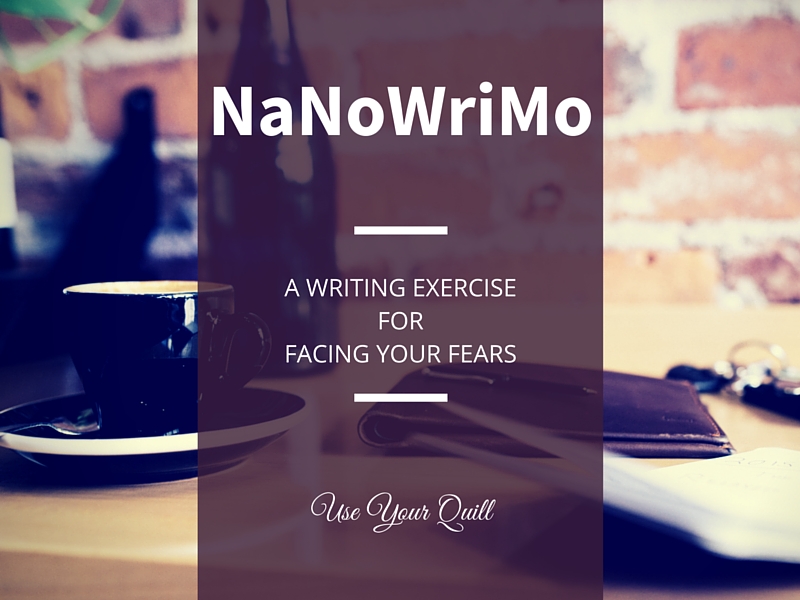By Laura Nsafou
NaNoWriMo has arrived! Unfamiliar with the acronym? It’s the writing challenge of November–the National Novel Writing Month. You can learn more about it in The List’s article Everything you need to know about NaNoWriMo, but the basic goal of this challenge is to write an entire novel in one month.
Every person who has attempted the NaNoWriMo challenge knows that you experience several obstacles. One obstacle is that you’ve got inspiration, but now you must write it down. So…how do you do it? Writing every day seems easy at first, but what NaNoWriMo teaches many writers is that the act of writing and having an idea are two different beasts.
The next set of obstacles form after the writing is complete. Doubt, curiosity, and fear will creep into the creative process if your preparation has not been vigorous.
Is my piece original? Have I written enough? Can it be a good novel if I’ve only spent one month writing it?
NaNoWriMo not only makes the writer question their personal process of putting ink to paper, it also underlines what we don’t think about when it comes to creating a story.
Below are four tips that will keep your courage strong during NaNoWriMo this year.
Let go of the myth of inspiration and sub it for consistent writing practice.
Through popular media, we’ve been taught that inspiration goes hand in hand with good writing. There is this idea that a good book can only come from something extraordinary. Elise Moreau says in 5 of the Biggest Myths About Creative People that,
…it’s popular to assume that creatives spend hours and hours of their time thinking until suddenly the big idea they’ve been waiting for just arises out of nowhere when they least expect it. It may seem like that’s what happens, but you can chalk it all up to something we all do. It’s called divergent thinking. It’s the type of relaxed and aimless thinking that happens when you take a break from focusing on the problem at hand and allow your mind to wander.
As poetic as Moreau makes it sound, it’s also easy to think that writing doesn’t take any practice. Writing without a purpose is one of the best ways to hone your craft. Bring a notebook wherever you go and describe what you see. This exercise will cultivate your observation skills and help you introduce those sensory details into your story when you most need them, presumably when you’re on hour three of your 3.5 hours a day NaNoWriMo writing schedule. This brings us to the next point…
Find a writing routine.
Do not let your motivation lead your work, but rather create a routine where you can focus. When do you write? When do you do your research on your subject? When do you discuss your problems on forums or on social networks? When do you put your work aside and relax? By having a schedule, you’ll find a balance. On his website, James Clear explains that a schedule will avoid leaving your novel only to motivation.
An article in The Guardian agreed by saying, ‘If you waste resources trying to decide when or where to work, you’ll impede your capacity to do the work.’ And there are plenty of research studies on willpower and motivation to back up that statement.
In other words, if you’re serious about creating something compelling, you need to stop waiting for motivation and inspiration to strike you and simply set a schedule for doing work on a consistent basis. Of course, that’s easy to say, but much harder to do in practice.
Deadlines won’t be a source of frustration if you organize your time. Moreover, writing regularly is a good idea to help deal with the frustration of “not writing enough.”
Accept that you are going to make mistakes.
After a couple weeks of writing and following your schedule, your first draft is here. Let’s be honest, it probably looks shaky. Hopefully, your schedule allows for moments to seek advice. Take the time to ask for help. It might prove useful to join a few writers forums. You’ll see other writers facing the same problems.
Are the characters realistic? Is the plot well explained?
Making mistakes/understanding that your work needs fine-tuning is common, but it can be frustrating to correct them, especially when time is limited.
Along with advice from fellow NaNoWriM-ers, there are also plenty of articles out there that describe common pitfalls in writing you might be able to use to clear a path for your draft. For example, this one talks about formal writing mistakes while other articles you may need will focus specifically on common plot concerns. Characters, backgrounds, details of their lifestyle… It can be difficult to build cohesiveness between these elements. Some bloggers like James Scott Bell could help you. He made a list of the The 5 Biggest Fiction Writing Mistakes (& How to Fix Them) in Writers Digest.
Chief among the most common problems, in first chapters especially, are scenes presenting characters who are perfectly happy in their ordinary worlds. The writer thinks that by showing nice people doing nice things, readers will care about these pleasant folk when the characters are finally hit with a problem.
These mistakes shouldn’t discourage you, but prove to you that you are learning. Working on your writing makes your story meaningful and readable. First, try to fix formal mistakes. It will clean your text and will make it easier for your entourage to read when you ask for their opinion on the plot. Of course, you’ll do major edits at the end of the challenge, but the point of NaNoWriMo is to show that writing a novel is a process that surpasses the deadline. The deadline is there to challenge you. What comes out of it is a story that can evolve and become a polished finished product.
Get feedback.
At the end of NaNoWriMo, you have written the number of pages considered to be appropriate for a novel. You learned new skills while putting them immediately to the test. It’s natural to wonder, ‘Was it worth it? Will my story impact readers?’ Although this question is frightening, getting others’ opinions is the only way to find out. On her blog, Joanna Penn shares her experience with feedback and how it helped her to improve her work:
Fear of criticism is worse than the actual criticism. Like most fears, it pales in comparison to what we have built up in our heads. If I really want to be a pro novelist (and I do) then I have to take a hell of a lot more criticism than this!
As a matter of fact, there is no one more critical of our work than ourselves. While you are wondering “was my novel worth it?”, a reader only wonders “what is the story about?” Good or bad, feedback is an example of what your story can provoke. It points out where your novel needs to be improved, but also where it is good!
NaNoWriMo can be a great experience once you know how to utilize it. It’s not about writing a bestseller in one month, but what it would take for your novel to be one. It gives you a glimpse of what kind of writer you are and how you can improve. Having a critical look at your work will prevent you from only dreaming of good work. Instead, you’ll actually do it.
So, tell us, what are your techniques to conquering the challenge of NaNoWriMo this year?






0 Comments